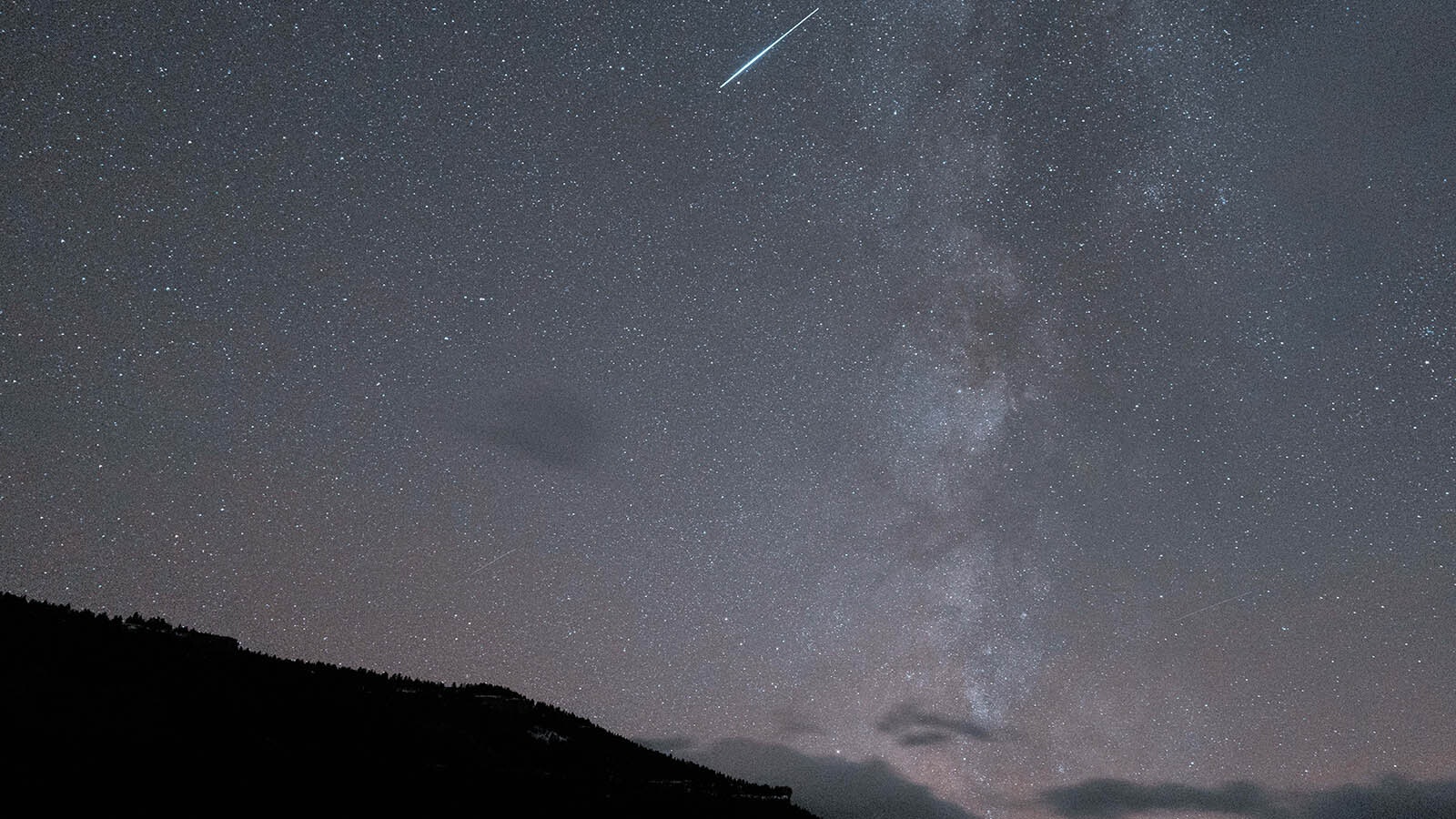Sinks Canyon State Park in Lander has become an International Dark Sky Park, making it the first Dark Sky Park in Wyoming.
Wyoming’s spectacular starry nights with little to no light pollution are a natural resource without official protection. After years of effort and determination, the skies above Sinks Canyon will remain dark forever.
Going Dark
Max Gilbraith, the planetarium coordinator for the University of Wyoming Physics and Astronomy Department, said he and his colleagues are thrilled Wyoming has its first Dark Sky location from DarkSky International.
Sinks Canyon is already excellent for stargazing, and the designation will make it even better, he said. It also can help elevate it to become a destination for stargazers from around the country.
“I love stargazing so much I’ve been there twice just this year,” he said about the stargazing at Sinks Canyon. “The walled-over canyon there blocks the light in such a way that it feels just as remote as anywhere else in the Wind River Range and gorgeously dark.”
Gilbraith explained that light is essential for communities at night, but much of that light is wasted as it’s sent straight up into the night sky.
That does nothing but obscure the dark beauty of the pristine night skies, even in sparsely populated areas like most of Wyoming.
Getting a Dark Sky designation or adopting a dark sky ordinance improves local ecosystems and human health, which can be impacted by artificial light cycles, and can save homes and communities money on energy bills by being more strategic on where light is directed, he said.
Is Wyoming In The Dark?
Wyoming remains the least-populated state in the nation and dark skies are everywhere. Yet it took 22 years for Sinks Canyon to become the first and only Dark Sky Park in the state.
Achieving the designation requires effort and planning, but communities like Flagstaff, Arizona, and Albuquerque, New Mexico, have successfully been designated International Dark Sky Cities , and both are considerably larger than Casper and Cheyenne.
Where are Wyoming’s dark sky designations?
“I’d say it’s a lack of awareness,” Gilbraith said about why more places in the Cowboy State don’t have it. “The tourism offices and different groups across Wyoming that like to bring in stargazers may not be aware that it’s an option. We just need to make more places aware.”
Gilbraith said many state parks and wilderness areas are already shoe-ins for a Dark Sky designation. They’d just need to submit an application.
Communities could be intimidated by the coordinated effort required to reduce light pollution and be turned off from pursuing a designation. But Gilbraith said the process doesn’t have to be onerous or immediate.
“There’s a lot our communities could do to mitigate how much light is being thrown up pointlessly in the sky with almost no impact to safety or comfort,” Gilbraith said.
“A smart way to do it can be to have a 10-year horizon where all the new (lighting) installs will be compliant with the dark sky ordinance, but it gives regular folks a normal lifespan for their already-installed lighting before getting new lighting that complies," he said.
A Multi-Year Process
Many places in Wyoming have dark skies, but more is required to be designated a Dark Sky Park by DarkSky International.
Since its inception in 2001, the international organization has “evaluated and designated more than 200 places that have demonstrated robust community support for dark sky advocacy and strive to protect the night from light pollution,” according to the DarkSky website.
Sinks Canyon State Park staff started working on a Dark Sky designation application in 2019 and spent years making significant changes before submitting it in 2022.
Among those changes was replacing all outdoor lighting with new shielded fixtures with motion sensors, reducing any artificial outdoor light as much as possible.
“Sinks Canyon provides a unique place to experience the wonders of the night sky and engage with nature,” said Amber Harrison, DarkSky places program manager, in a statement announcing the designation.
“This certification demonstrates support for dark sky conservation at the local and state levels and draws attention to the significant resources of the park, surrounding protected lands, and communities," she said.
Night Vision
Dark skies offer more than stargazing. One of the first organizations to celebrate the Sinks Canyon State Parks designation was the Wind River Visitors Council.
“This designation will undoubtedly bring those seeking room to roam, which will result in tourism dollars being spent throughout Wind River Country and contribute to a strong economy,” said Helen Wilson, executive director of the council.
Wyoming is better positioned than any other state to benefit from its vast, pristine night skies. Places like Sink Canyons State Park wouldn’t pursue such designations if there weren’t benefits from it.
More importantly, Dark Sky designations and ordinances are ways to ensure responsible development of land resources. As the Cowboy State becomes an increasingly attractive destination for tourism and relocation, applications to DarkSky International could be an unorthodox solution.
“There’s not too much work to be done in Wyoming,” Gilbraith said. “There’s stuff we can do a lot better, but a lot of state parks and recreation areas that are basically already compliant. All they’d need to do is apply for designation.”
Andrew Rossi can be reached at arossi@cowboystatedaily.com.





